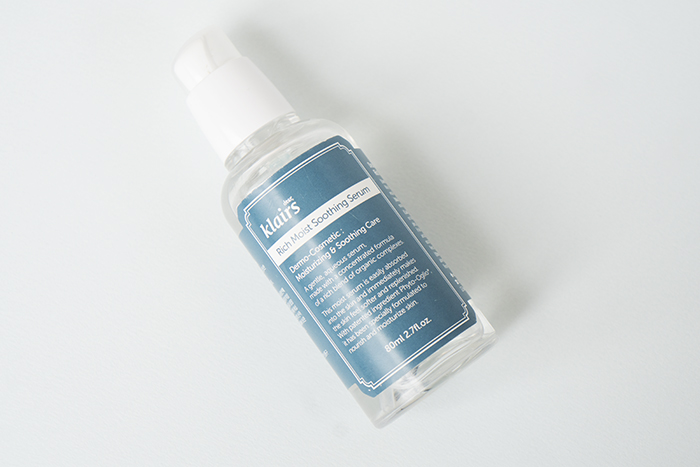What happens to your skin on a plane? We highlight four negative side effects of your travel bug and how to keep your skin in check when you’re thousands of feet above the ground.
Summer is approaching…and you know what that means: travel season! Whether you’re going across the country or circling the world, you might be heading on a flight soon.
I’m a travel junkie. So, any chance I get to go traveling, I take it. I’m quite familiar with the inevitable airplane dehydration. But there’s more than dry skin to worry about while on an airplane. Here, we outline four ways airplanes wreak havoc on our skin and the best ways to prevent them.
Lack of humidity and recycled air = Dry skin
We’ve all heard time and time again about how flights can dry out our skin. But, why exactly does that happen? It has more to do with the lack of humidity than the fact that the flight contains recycled air (but both do play a factor).
When the plane reaches its final altitude, you’re usually cruising 30,000+ feet in the air. As the cabin pressure increases, the humidity decreases. Airplanes on average have less than 20 percent humidity, and sometimes more on newer aircrafts. Our skin thrives in environments that have at least 60 to 70 percent humidity. As you can imagine, the drastic change in environment is going to cause our skin to react negatively. Imagine how quickly your hair dries in the summertime and then increase that times five. This is how the low humidity in the air rapidly draws moisture from your skin.
As the moisture evaporates, the more prone you are to dullness and dehydration. The reality is that no matter what, your skin is going to get dehydrated in some way. The best way to prevent the exacerbation of dehydration is to hydrate skin effectively. You can do this by trapping in moisture using occlusive products. These are essential because they create a film on the skin that prevents moisture loss.
The Sioris Enriched By Nature Cream is chockfull of hydrating ingredients. The nourishing formula contains shea butter, glycerin, and jojoba seed oil. Shea butter provides hydration and softens skin, while glycerin attracts water to the skin and helps to maintain its moisture content. The blend of ingredients is perfect for long-haul flights. These ingredients work in tandem to impart deep hydration that won’t evaporate quickly in the dry air.
UV Rays = Increased chance of photo-aging
“At 10,000 feet, you are closer to the sun, which increases your risk of UV light damage,” says Joshua Zeichner, dermatologist and director of cosmetic and clinical research in dermatology at Mount Sinai Hospital in New York City.
Airplanes come outfitted with windows that are designed to block out UVB rays, but Zeichner points out, “UVA light can penetrate right through window glass, so it is important to protect yourself with sunscreen, even on an airplane.” UVA rays are also the most damaging ones. They have the ability to penetrate the deepest layers of the dermis. These rays increase photo-aging and the potential to develop skin cancer.
Who hasn’t glanced out the window for a chance to get a picture surfing above the clouds? Some might suggest keeping your window shut the entire plane ride but that would take all the joy out of flying. It’s more important to remember to slather on enough sunscreen to keep you protected, so you can keep enjoying the beautiful view.
One of my favorite sunscreens is the Neogen Day Light Protection Airy Sunscreen. It contains a broad spectrum SPF50 protection that also hydrates and nourishes the skin. Plus, it has no ghastly white cast, which is always a win-win in my book.
Dry Air = Increased oil production
Remember that dry cabin air? It does more than suck the life from your skin. Something to keep in mind is that our skin is like our best friend: When something is trying to cause damage, it comes in to protect itself (AKA you) from any aggressors. If your skin is lacking moisture, it actually revs up oil production to lubricate it. The increased oil could lead to potential breakouts.
The best way to avoid experiencing this is to keep your skin hydrated for the duration of the flight. Misting throughout your flight is a great way to keep your skin moisturized, but avoid mists that are water-based since they actually have the opposite effect and increase moisture loss.
The Acwell Licorice pH Balancing Essence Mist is a great choice. It contains bamboo water and licorice root extract, which helps keep your skin’s moisture in check, so it can continue to fight off acne-causing bacteria. Plus, it helps your skin stay hydrated long-term.
Travel stress = Travel acne
There’s no easy way around it, traveling is a high-stress situation. From waiting in the TSA line to running to catch your flight, it’s a hassle. This increased stress can actually lead to pimples popping up post-flight. When we’re stressed, our body goes into overdrive and produces the hormone cortisol. As cortisol increases, so does testosterone, which can escalate the formation of pimples. It’s also believed that stress increases sebum production, which can end up clogging pores. The body also reacts to stress by increasing inflammation which can irritate any existing acne.

You can combat acne inflammation by applying a calming serum mid-flight. The Klairs Rich Moist Soothing Serum is formulated with hyaluronic acid and centella asiatica extract. These ingredients work together to provide nourishing hydration while centella soothes inflammation and helps keep acne at bay.
Bottom Line
Traveling is stressful. Both your skin and your body go through a lot while traveling on long-haul flights. Remember to always hydrate, hydrate, hydrate. Plus, you can help calm your mental stress by packing sooner and getting to your flight earlier than you think you need to. Your skin will thank you!



